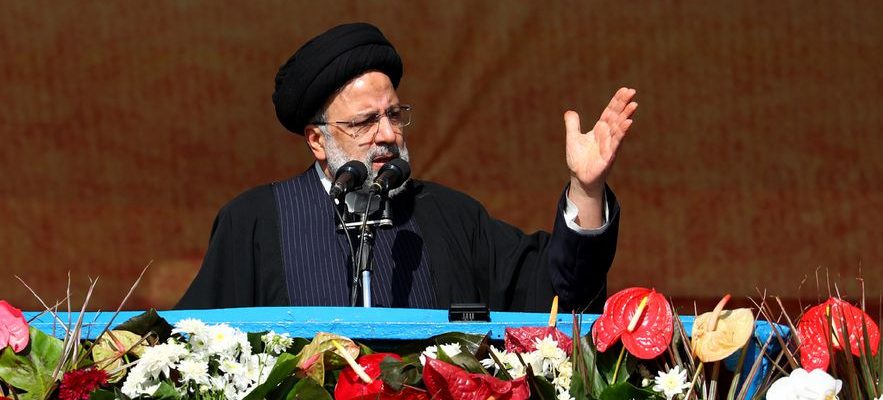“Take off your scarf, the sun is going to set,
Take off your scarf, your perfume will cut through the pure air,
Take off your scarf, let your hair down,
Don’t be afraid, my love.”
For these few hopeful verses, Mehdi Yarrahi sleeps in prison in Tehran. Arrested at the end of August after the release of his last clip, the Iranian singer is one of the wagonloads of opponents that the regime throws into its jails a few days before the first anniversary of the death of Mahsa Amini, a young Kurdish woman beaten to death by the morality police on September 16. “The authorities are using all possible means to frighten and discourage people from demonstrating again,” explains Thierry Coville, Iran specialist at the Institute of International and Strategic Relations (Iris). “They seem to be very, very afraid of a new episode of massive demonstrations.”
“The reasons for the uprising are still there”
Pressure on the families of killed demonstrators, executions of prisoners, preventive arrests… “The level of brutality of the Islamic Republic increases tenfold as we approach September 16, notes Saeid Golkar, specialist on Iran and professor at the University of Tennessee. The regime’s only response to the protest was to use force, but the reasons for the uprising are still there, with its inequalities and a continuing economic crisis. So the authorities know that new demonstrations remain possible .”
After an explosion of several months, from September to January, the protests dried up, then transformed into acts of civil disobedience in the streets and cafes. Iranian women defy the obligation to wear the veil but, after the hope of a relaxation of the regime, the moral police have made a return in recent weeks. “The authorities fiercely repressed the demonstrations and people returned home out of a simple desire to survive,” says Saeid Golkar. “Then, once the events calmed down, the Islamic Republic returned with an even harsher approach: this “It’s no coincidence that they use the same strategy in every uprising.” The repressive arsenal has expanded and the authorities are now calling on their civilian support. A mobile application, which all Iranians can download, allows them to take photos and report their neighbors who do not respect Sharia law.
A new law similar to “gender apartheid”
A law is under discussion to further toughen sanctions for non-compliance with the wearing of the veil, with massive use of video surveillance. “They are trying to codify their discrimination in the law, by expanding what it covers even further and using modern technologies to apply it,” underlines Hadi Ghaemi, director of the Center for Human Rights in Iran. a real gender apartheid, since these laws specifically target women in all areas: their work, their bank account, social assistance, education, etc. This new law seeks to subjugate women, with discrimination that does not does not concern men. Among the “punishments” envisaged by the mullahs in the event of non-wearing the veil: higher fines, restricted access to bank accounts and the Internet, travel limits, confiscation of personal vehicles and prison sentences.
Iranian President Ebrahim Raïssi addresses the crowd gathered in Azadi Square on the occasion of the 44th anniversary of the Islamic Republic, February 11, 2023 in Tehran
© / afp.com/-
Since the arrival of Ebrahim Raïssi to power in August 2021, the regime has become further radicalized. It is no coincidence that the Islamic Republic had given, by decree, more powers to the moral police, just one month before the murder of Mahsa Amini. “Last year’s demonstrations were a real shock for the regime,” points out Thierry Coville. “They have been described as the most important since the 1979 revolution, and for good reason: people came out into the streets to shout down with the Islamic Republic.” The only solution found by the dignitaries for the moment: repression.
“There is a huge appetite among the population to demonstrate against the regime,” says Hadi Ghaemi. “The economic, political and social life of Iranians continues to deteriorate, the lack of water is becoming a major problem in rural areas and everything suggests that the situation could explode again at any moment. The anniversary of Mahsa Amini’s death may be that moment, but we should not judge the strength of the protest based on the number of people marching in the streets over the next few years. days, the risk is too great for the demonstrators at the moment…” The coming weeks promise, once again, their share of fear in the Iranian streets.
